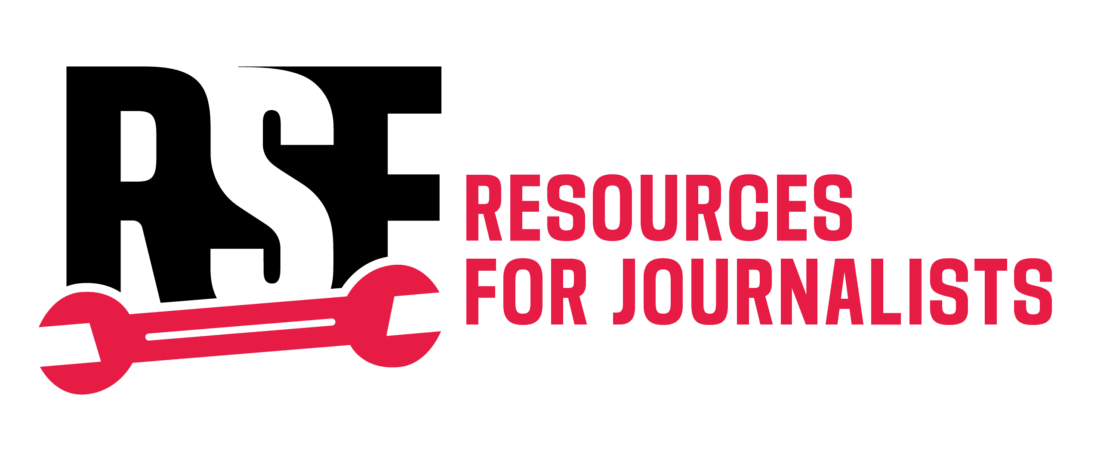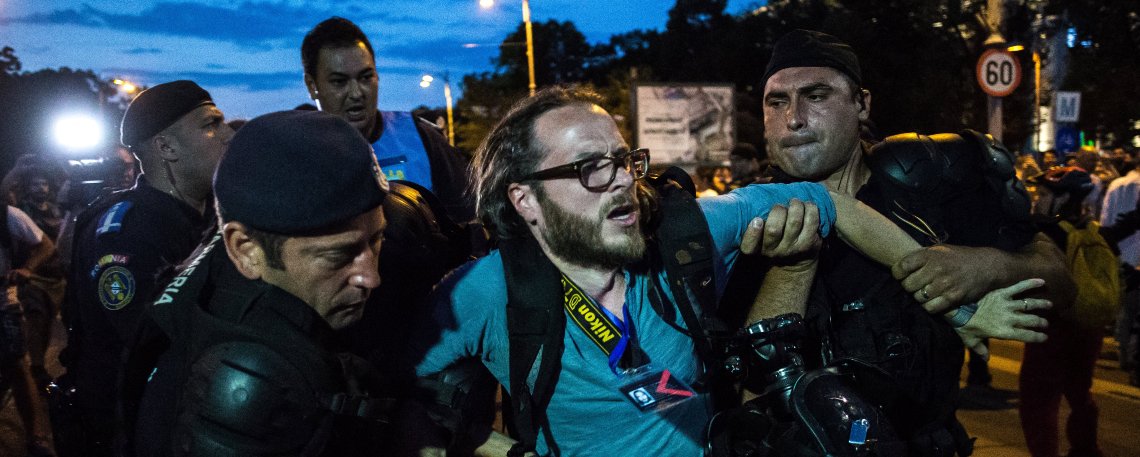A survival kit to keep in your pocket and in your head
“Dead men have indeed died in vain if live men refuse to look at them.” This quotation by the celebrated war photographer Robert Capa referred to all humans, but can be applied particularly to journalists killed in the line of duty. We won’t dwell on the grim figures here, but which of us doesn’t know a colleague hit by a stray bullet or deliberately targeted while on assignment?
In war zones, as in times of peace, figures show that international law is regrettably insufficient to protect journalists. Reporters Without Borders (RSF) contributed significantly to the resolutions on the protection of journalists approved by the UN Security Council in 2006 and 2015. But, like the Geneva Conventions, these resolutions are not panaceas.
Those whose vocation and profession take them into dangerous parts of the world will never be entirely out of harm’s way, and safety is to a large extent a matter for journalists themselves, both collectively and individually. In the collective sense, the establishment of procedures for editorial staff, the exchange of information among colleagues and the provision of facilities by organisations such as Reporters Without Borders are essential.
The Safety Guide for Journalists issued by Reporters Without Borders is aimed at providing guidelines and practical advice for all those who risk running into an enemy of press freedom on a street corner or on a deserted road. Such a situation can quickly test the difference between a happy-go-lucky journalist who set off unprepared and a reporter who packed the right survival kit of experience and equipment.
In partnership with UNESCO, Reporters Without Borders is bringing out a new edition of the Handbook for reporters in high-risk environments. First published in 1992 and updated several times since, this Handbook has also been issued in French, Spanish and Arabic and distributed on every continent.
Christophe Deloire
Reporters Without Borders’ Secretary General
A guide that symbolizes coordinated action
The right to free expression is a human right and a basic freedom enshrined in Article 19 of the Universal Declaration of Human Rights. In the first place, it is a right in itself – the right to receive and impart information and ideas through any media – but it also allows all other basic rights to be freely exercised and protected. Many instances throughout history have taught us that, when freedom of expression starts to collapse, other basic freedoms can quickly suffer the same fate.
The first article of the constitution of the United Nations Educational, Scientific and Cultural Organisation (UNESCO), approved on 16 November 1945, states that its mission is “to promote the free flow of ideas by word and image”. Freedom of expression and its corollaries, freedom of information and freedom of the press, are thus at the heart of UNESCO’s mandate.
Journalists and news organisations are essential participants in the exercise of this basic freedom, which is why those who want to impose tight control on public debate and citizens’ right to information so often target them. The huge number of journalists killed in the course of their work in recent years – more than 700 since 2006, according to a report presented by the Director-general of UNESCO at the International Programme for the Development of Communication on 21 November 2014 – shows the scale of the problem and the difficulty of dealing with it.
The figures are alarming. According to the UNESCO Director general’s report, the vast majority – almost 95 percent – of those killed in the course of their work were local journalists. Most were not covering armed conflicts, but were reporting on local stories. Furthermore, in the past 10 years only 6.6 percent of cases involving the deaths of journalists have been resolved. This is an impunity rate of more than 90 percent, which sends out the devastating message that killing a journalist in order to silence him or her will have few repercussions for those responsible.
The United Nations Chief Executives Board endorsed a UN Plan of Action on the Safety of Journalists and the Issue of Impunity on 12 April 2012 as a coordinated response and to motivate all partner organisations. The Plan of Action is a coordinated inter-agency mechanism with a multi-pronged approach towards implementing a global strategy designed to improve the protection of journalists. On 18 December 2013, the UN General Assembly adopted Resolution 68/163 on the safety of journalists, which proclaimed 2 November the International Day to End Impunity for Crimes against Journalists and tasked UNESCO with coordinating the implementation of the Plan of Action. Since then, various resolutions have been adopted by the General Assembly, the Human Rights Council, UNESCO and regional inter-governmental organisations, which signify the strengthening of safety standards for journalists.
The Plan of Action highlights the importance of raising public awareness of journalists’ safety and of the issue of impunity, and of the need to implement safeguards, strengthen the capacity of the judicial system, the police, the army and civil society in relation to the obligations and commitments made by governments on journalists’ safety.
Dealing with new threats and challenges to an increasingly dangerous profession will require the efforts of all those involved. Among the many measures and good practices implemented to improve journalists’ safety, the Safety Guide for Journalists issued by Reporters Without Borders and UNESCO stands out. The first version, produced in 1992, has been translated into several languages and updated several times since. More than 20 years on, the threats facing journalists in 2015 have changed. New dangers have appeared while others are being better tackled. To cope with these changes, several new chapters have been added to the Guide. It now covers the issue of digital safety, a growing worry for journalists (UNESCO has just published a study on the subject: Building Digital Safety for Journalism), safety precautions for those covering natural disasters or epidemics, and also the problem of sexual violence, aimed particularly at female journalists.
No single stakeholder can meet the huge challenge of journalists’ safety alone. The Guide is an important body of knowledge and experience acquired over the years by journalists, news organisations and groups that campaign for freedom of expression. By gathering and encapsulating these good practices from many different sources, the Guide embodies the desire of all partners to join forces and work more closely together to strengthen every aspect of the safety of journalists and the fight against impunity.
Guy Berger
Director of the Division of Freedom of Expression and Media Development, UNESCO


